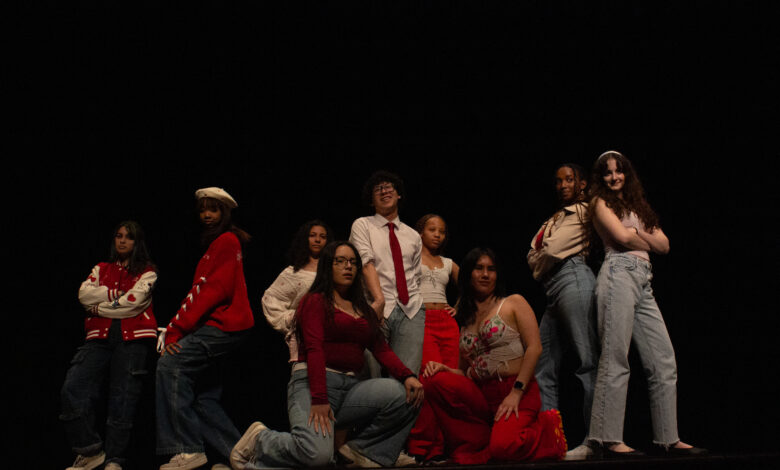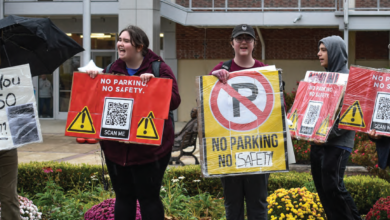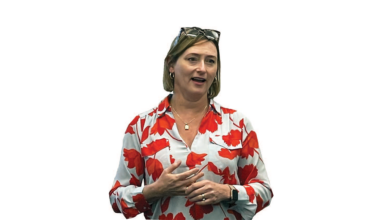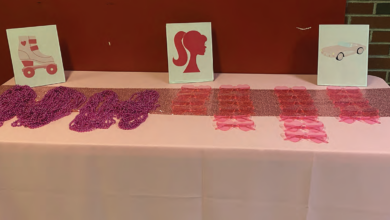
Pump up the beat with ‘Heartbeat of the East’
By Grace Bertrand
FROM serene and authentic cultural performances, to upbeat and sharp dancing, the keen audience of students and families were dazzled by the wardrobe, movements and storytelling of Asian culture.
On April 10 in the Bart Luedeke Center Theatre, Rider’s Asian American Alliance showcased a constellation of student performances for Asian American and Pacific Islander Heritage Month, called “Heartbeat of the East.”
Although AAPI Heritage Month is celebrated nationally in May, Rider celebrates it in April before commencement.
“Everybody at Rider should feel a sense of belonging here, so that’s why we’re trying to create this diversity feeling,” said Ruowen Liu, president of the Asian American Alliance. “Sometimes people don’t realize that we should appreciate this colorful world with different cultures. If you only live in your small world, then you don’t see how beautiful the outside is.”
“Heartbeat of the East” is the latest in a series of annual AAPI Month celebrations that goes by a different title every year, previously named Pulse of Asia in 2024. Formerly taking place in the Cavalla Room, this year’s production was elevated with a new theater space and acts.
Liu explained the organization’s goal for this year was to include more student groups in an effort to gain more student traction for the event.
The night featured three group performances from “Pulse,” Rider’s Korean Pop Culture Club, made up of students from different ethnicities, to depict different parts of Asian dance culture: “Untouchable” by Itzy, “Strategy” by TWICE and “90’s Love” by NCT U.
Each student performance tied together the theme of the event — celebrating Asian culture through the power of music and dance.
Sanjana Butala ’23, who performed an Indian classical dance, championed the idea of music bringing people together in a way nothing else could.
“I think dancing music is a really important medium for tying people together, not just within the same culture, but also people from different cultures,” Butala said. “Music is something that any human heart can relate to and connect with.”
Butala’s performance, called Kathak, is a classical dance form originated from Northern India, according to the event’s program. The choreography represents the multiplicity of emotions of the divine bond between Lord Krishna and Radha, two main deities from traditional Indian folklore.
As a Rider alum, this year was Butala’s third time performing for the event. She expressed music being an outlet to honor her heritage and do something she loves simultaneously.
The night also featured solo performances from dancers at Qing Yang Dance Studio. Dressed head to toe in traditional Chinese dance dresses, Yancy Hu and Lauren Guo respectively performed Chinese classical dances called “Sprouts Growing Under Moonlight,” and “Blooming Memories of Autumn.”
Dances were not the only musical standouts of the night. Timothy Urban, who teaches at Westminster Conservatory of Music, performed musical renditions of four traditional Chinese songs using Chinese instruments: Hulusi, Bawu and Xun.
“I’ve been playing folk instruments from around the world for many, many years,” Urban said. “I’ve always liked the sound of Chinese folk music and folk instruments.”
Urban said that in 2013 he went to China and purchased instruments that he has been playing since.
“[Music] speaks to all of us in different ways,” he said. “This music speaks to me, so I’m drawn to it, so I wanted to be able to perform it and understand it more, and then share it with other people.”
Urban sang for his final piece, adding to the other vocal performances of the night. Xiaoyan Huang, from the Qing Yang Dance Studio, performed renditions of traditional folk and opera songs called “Peach Blossoms Are Red, Apricot Blossoms Are White” and “Ode to the Pear Blossom.” The Rider University Chorale also performed two traditional Chinese folk songs: “A Ditty of Yimeng Mountains” and “Penpen de Sarapen.”
The playful and rhythmic lyrics narrate the different influences and traditions of Asian cultures like Chinese and Filipino, telling their stories through song.
“I know that different languages might be the barrier for our communication across cultures, but music, dance and different musical instruments are all languageless,” Liu said. “You can totally enjoy [the performances] even if you don’t understand the lyrics. It’s universal.”



